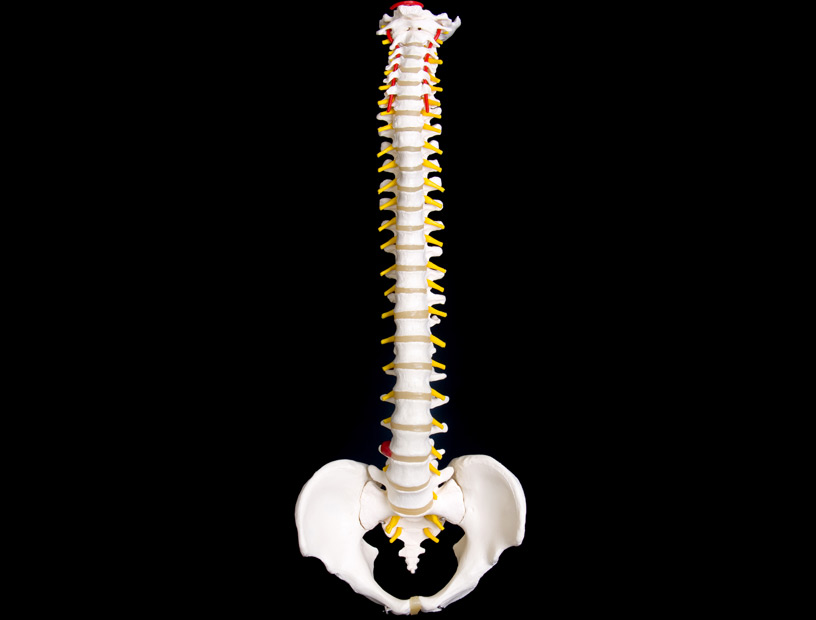
Our top spine specialists can provide you with improved mobility and comfort.

By understanding the conditions and treatments relating to the spine, you can know whether you would benefit from a visit to a spine specialist in Costa Mesa. The bones that make up the spine are fairly durable. Even so, the backbone is still susceptible to some type of injury or strain. If initial treatments fail to provide relief, you may be referred a spine specialist in Costa Mesa for further evaluation.
- The spine consists of 33 different bones
- There are a handful of common spine issues this type of doctor often diagnoses and treats
Arthritis of the Spine
Sometimes referred to as degenerative joint disease, spinal arthritis (osteoarthritis) is caused by the gradual breakdown of tissues supporting the joints of the spine (facet joints). Patients often experience some combination of lower back pain and leg pain, especially if nerves are affected by the wear and tear on cartilage and other soft tissues.
There may also be tenderness in the affected area or pain that seems to get worse or be triggered by certain movements. A spine specialist may suggest physical or occupational therapy and lifestyle management techniques such as losing weight, eating a balanced diet, and avoiding activities that tend to increase stress on facet joints.
Non-Specific Low Back Pain
Affecting about 30 million people in the United States, low back pain (LBP) is the most common form of back pain. In some cases, there is no clear cause of LBP. Possible contributing factors may include muscle strain or overuse or nerve compression that hasn’t been detected by an X-ray or MRI.
When there is no specific source of LBP, the discomfort often goes away or occurs occasionally but not to the point where it’s chronic, or constant. Core exercises may provide relief by increasing the strength of muscles directly or indirectly supporting the spine.

Disc Herniation
If the softer inside disc material pushes through to the outside, it’s referred to as a herniated disc. Nerve irritation may cause weakness or numbness or radiating pain felt in one arm or leg. Medication in the form of muscle relaxants and anti-inflammatory drugs, local injections, and physical therapy are some of the treatments often suggested before surgery becomes a consideration.
An increasingly common procedure for disc herniation is a microdiscectomy, a minimally invasive type of surgery involving the removal of the damaged part of the disc. The procedure has a high success rate when disc damage is affecting the sciatic nerve (sciatica) that runs from the lower back to the legs. An anterior cervical discectomy and fusion is one of the surgical options available to patients if the herniated disc is located among the seven bones of the neck.
Spinal Stenosis
Sometimes present at birth, spinal stenosis is a narrowing of the spine. Some people have the condition with no discomfort at all. It only becomes an issue when the narrowing, which may become problematic later in life due to age-related changes in the spine, presses on adjacent nerve roots. Spinal stenosis often affects either the lower back (lumbar spinal stenosis) or the neck (cervical spinal stenosis).
Depending on the degree of the narrowing, a spine specialist may recommend epidural injections or anti-inflammatory medications. Involving the removal of a small portion of bone near the affected nerve root, a lumbar laminectomy is the most common surgical treatment for spinal stenosis. If the abnormal curvature occurs sideways, it’s a condition called scoliosis, which may be caused by chronic arthritis or age-related degeneration.
Spinal Trauma or Injury
If trauma or injury to the spine has occurred, a spine specialist typically performs image tests to determine the extent of the damage. Serious trauma affecting the spinal cord may require surgery. Spinal trauma may also cause one vertebra to slip or move out of place or damage one or more of the spongy discs that cushion the spine.
Often resulting in fractures, dislocations, or a compression affecting one more of the bones of the spine, traumatic spinal injuries are usually the result of a traumatic blow, sudden, forceful impact, or a hard fall. The goal for a spine specialist is to repair the damage or restore stability to a compromised backbone. Treatment depends on the severity and location of the injury.
Simply being referred to a spine specialist in Costa Mesa doesn’t mean back surgery is automatically an option. Oftentimes the reason for the referral is to achieve a more accurate diagnosis or pinpoint the source of your back pain. There may be non-surgical remedies you haven’t considered yet or physical therapy techniques such as TENS (transcutaneous electrical nerve stimulation) that may benefit you.
on caring for specific orthopedic needs.
